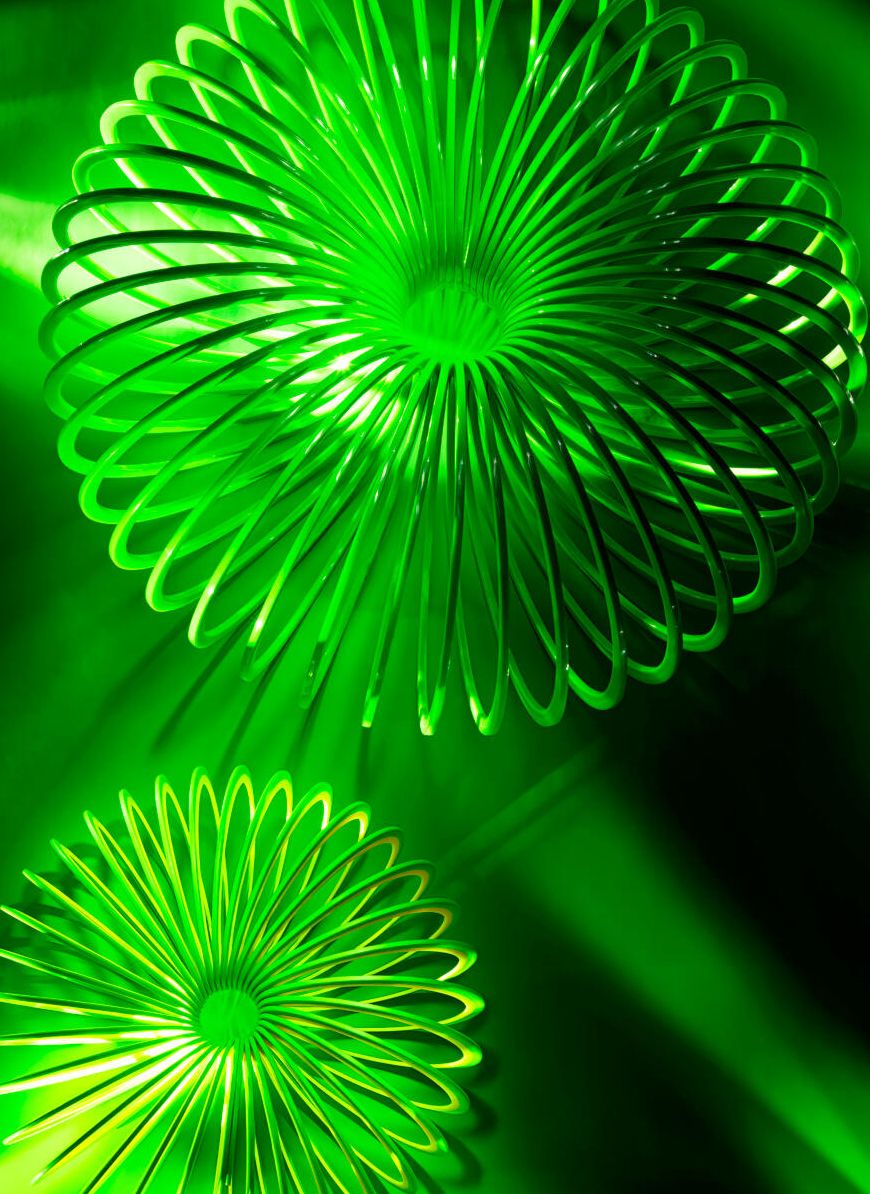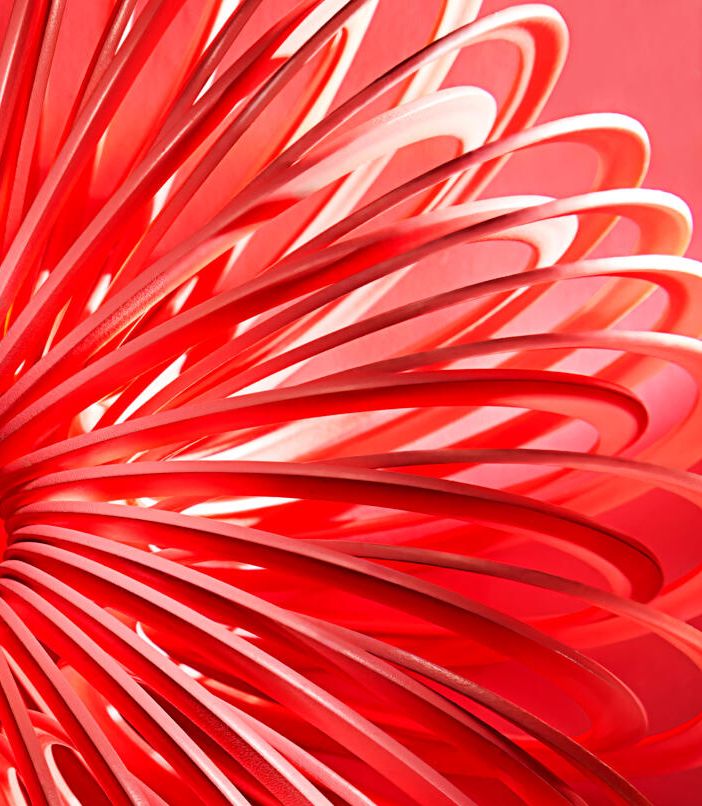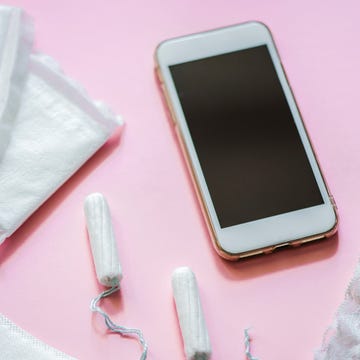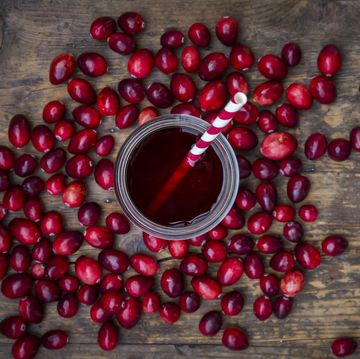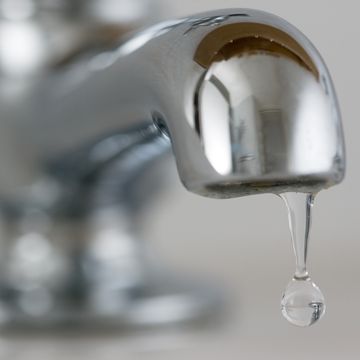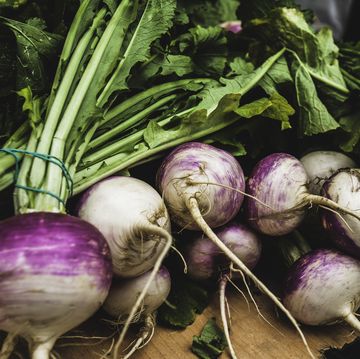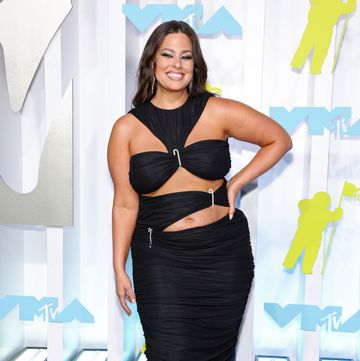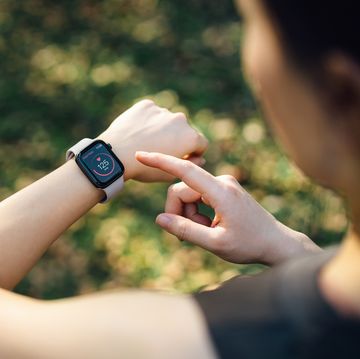Until recently, I’d been on some form of birth control since I was 13 (I’m 32 now). Now that I’ve stopped popping a little pill every day, I’m learning that while I may have skipped some of the not-so-fun aspects of a regular cycle (cramps and bloating, anyone?), I also didn’t get to experience the powerful parts, like bursts of energy and strength.
I also never learned how to support my body through its various shifts. With periods making a consistent appearance again, I want to do all I can to have as pleasant an experience as possible. Enter: cycle syncing, a buzzy concept that has nothing to do with getting your period at the same time as a friend.
What is cycle syncing?
Cycle syncing is the idea of matching how you eat, work, exercise, and recover to the stages of your menstrual cycle. You may have heard about tailoring your fitness routine to each phase—this is the same idea, but expanded into other facets of life.
More From Women's Health

This general practice has been around for a while, but the term itself is newer. Female athletes, coaches, and researchers have realized that athletic performance changes with hormonal shifts throughout the month, and training can be tweaked accordingly. So, the weeks when a woman has higher stamina may include harder workouts, and times marked by less energy are more recovery-focused. (More on this in a minute!)
What are the benefits of cycle syncing?
Anyone who has a cycle can benefit, but it’s especially useful for the following issues, says Jessica Ritch, MD, a minimally invasive gynecologist and medical advisor for Elix herbal supplements.
- People with bad period-related symptoms
- Those who have fibroids, endometriosis, polycystic ovarian syndrome (PCOS), or pelvic pain
Optimizing your routine around your cycle can ease discomfort leading up to and during menstruation, like low mood, cramps, diarrhea, bloating, and acne. The result? A happier, more stable you.
How To Start Cycle Syncing By Phase
Once you know the stages—menstruation, follicular phase, ovulation, and luteal phase—you can adjust your routine. While there isn’t a ton of research on this trend, studies on individual practices as well as anecdotal evidence point to the merits. Here, a map for riding the wave at every stage.
Menstruation
Each cycle starts with menstruation (i.e., when you see red). Levels of the hormones estrogen and progesterone drop, which causes the thickened lining of your uterus to shed and may lead to cramping and bloating. The cells that form the uterine lining begin to break down and flood your system with inflammatory substances called prostaglandins, the culprit behind cramps and inflammation.
Food Focus
“It’s important to replenish the nutrients you lose during bleeding,” says Dr. Ritch, so eat foods high in iron and vitamin B12, as well as those with anti-inflammatory properties. When iron levels are low, cramps can be worse, likely because iron helps red blood cells deliver oxygen to muscles. Load up on iron-rich dark leafy greens, nuts, lean red meats, egg yolks, lentils, and clams, as well as foods high in vitamin C, such as broccoli, citrus, strawberries, and bell peppers, to optimize iron absorption, says Melissa Groves Azzaro, RD.
Consider spicing up your meals and drinks with turmeric and cinnamon, which can tame that internal fire too. High-fiber foods as well as ginger help regulate the dreaded “period poops,” says Dr. Ritch. Also key: Magnesium, found in favorites like dark chocolate and pumpkin seeds, pulls double duty in promoting better sleep and reducing muscle cramping in the uterus and bowels.
Workout Focus
When it comes to cramps, “I recommend movement, but nothing strenuous,” says Dr. Ritch. Think: yoga and walking…or whatever feels good. “Recovery is also really important during this time to help with inflammation,” she adds.
Life Focus
Women who get fewer than seven hours of sleep or go to bed after 11 p.m. are more likely to experience cramps during their cycle, per a meta-analysis from the International Journal of Environmental Research and Public Health. This is a good time to make adequate shut-eye a must (though it should be all month long, as you know!).
Follicular Phase & Ovulation
The former starts on the first day of your period (it overlaps with menstruation) and continues until you ovulate. Your body releases follicle-stimulating hormone, which tells the ovaries to grow and prepare eggs for ovulation. Throughout this stage, estrogen levels climb, leading to a thickening of the uterus to get ready to host the egg. This phase lasts for roughly 16 days and is usually smooth sailing symptom-wise (once you’re past the earlier cramps, etc.).
Then ovulation occurs as rising estrogen levels trigger the release of luteinizing hormone, which causes your ovary to release a mature egg. This is signaled by a slight uptick in body temp—usually right in the middle of your cycle.
Food Focus
Ovulation can be ouch-inducing for some, and omega-3 fatty acids may offer relief by decreasing inflammation. Go for fatty fish such as salmon, mackerel, and sardines. Not a fan of seafood? Opt for plant-based sources like walnuts and chia. Just one serving two or three times a week will boost your levels almost immediately and throughout the month, says Azzaro.
Ground flaxseed (2 to 4 tablespoons daily)—mix into smoothies or yogurt parfaits—can also help regulate hormonal ups and downs. “This is something I recommend for symptoms of high or low estrogen, as well as high androgens, as seen with PCOS,” says Azzaro. Flax contains plant-based omega-3s and phytoestrogens called lignans that help balance hormones.
Workout Focus
The peak in estrogen and release of testosterone during ovulation can boost sex drive and energy. The rise in both hormones also increases your pain tolerance, says Dr. Ritch. In other words, this is a great time to pursue heavier lifts, HIIT workouts, or endurance training, since you can exercise harder with more ease. Nice!
Life Focus
The later follicular phase, right before ovulation, is time to really go for it in your career and social life because this is when people typically feel their best, says Dr. Ritch. During this window, many women feel less fatigued on fewer hours of sleep. “Whatever event will take the most energy that month, like a work presentation or a big party, this is a good time to schedule it,” she says
Luteal Phase
This begins after ovulation and loops back to menstruation—and it’s admittedly “a crappy time for people who have symptomatic periods,” says Dr. Ritch. The decline in estrogen and rise in progesterone can lead to breast tenderness, migraines, bloating, and digestive issues such as diarrhea and constipation. PMS symptoms start popping up due to an increase in cortisol and a decrease in serotonin. Feeling sad and experiencing trouble with concentration are common during this roughly 14-day span.
Food Focus
You feel low, so you turn to coffee, alcohol, and doughnuts for a lift, but they can have the opposite effect. The drinks lead to dehydration, and the sugary and salty foods fuel inflammation. Instead, reach for high-fiber, slow-digesting carbs like quinoa, grains, and potatoes to stay full longer and nix cravings.
FYI: Vitamin B6 and calcium are your shield against severe PMS symptoms. “You can get calcium from dairy and leafy greens like bok choy and collard greens, and B6 is found in salmon, chicken, and chickpeas,” Azzaro says. Need additional help? The same nutrition advice for alleviating discomfort during menstruation is handy here too.
Workout Focus
Cardio performance tends to suffer during this time due to the spike in cortisol and drop in serotonin. The progesterone rise can lead to water retention that makes you want to curl up in bed instead of hitting the gym. If you want to keep moving, Dr. Ritch recommends strength training, walking, or yoga during this time. It’s okay if your body is leaning toward gentler movement or favors recovery. A little push: Know that activity can be beneficial for combating low moods that come along.
Life Focus
Staying calm is essential, as cortisol is already higher than normal, and research shows that added life stress can contribute to period cramping. So get your favorite restorative rituals on the calendar, whether they’re a call with a friend, a movie night, a group dinner out, or extra journaling or meditation time.
This article originally appeared in the May/June 2023 issue of Women’s Health.



